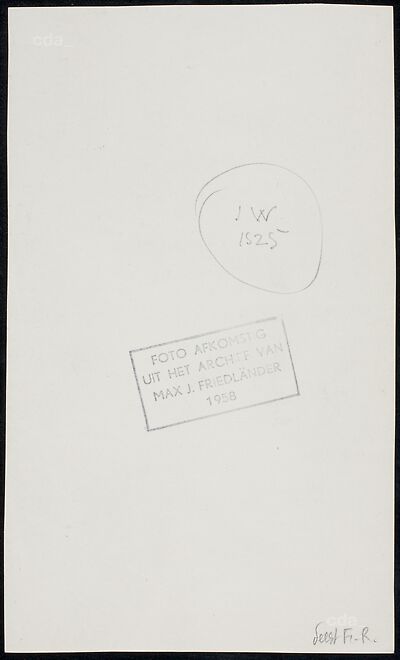The painting depicts Lucretia as a three-quarter length, standing figure in contemporary dress.
Her head is lowered and inclined slightly to the right. In her right hand, which is raised she holds a long dagger pointing down towards her, and in her left hand she elegantly holds the gown. This is
The painting depicts Lucretia as a three-quarter length, standing figure in contemporary dress.
Her head is lowered and inclined slightly to the right. In her right hand, which is raised she holds a long dagger pointing down towards her, and in her left hand she elegantly holds the gown. This is patterned and trimmed with fur and is draped over both shoulders. Under the gown Lucretia wears a sumptuous robe with a similar pattern. In addition Lucretia wears precious jewelry: a neckband decorated with precious stones, two thick necklaces and a linked chain with a pendant. She wears gloves and numerous rings on her fingers. Her hair is pinned up under a bonnet decorated with pearls.
According to the legend Lucretia lived in the 6th century BC and was the beautiful and virtuous wife of the roman Collatinus. The roman King's son - Sextus Tarquinius fell in love with her. During a stay in her house Sextus threatened to kill her and shame her honour if she did not surrender to him. After the rape Lucretia had her father and husband vow vengeance and then she stabbed herself. The event led to an uprising in which the royal family was overthrown and the Roman Empire became a Republic.
Depictions of Lucretia who was seen as the epitomy of female virtue, chastity, fidelity and honour enjoyed great popularity, particularly in the 16th century.
[Literature: Bierende 2002, Follak 2002, Livius 1909]


